The Tour de France is in full swing, and with it, a few days ago, the time trial stage. That’s always an interesting opportunity to check out which sports tech riders are using, such as bike computers, trainers, as well as things like laundry machines and fans (the swirling variety, not the screaming variety).
In the above video give a walk-through of the entire team/technical zone (called the paddock), where I show how it all works. From the warm-up routines/schedules, to each step along the way from warm-up to the starting gate (including UCI checks, additional warm-up trainers at the starting gate, and more). And obviously, we talk pineapples too.
Now when it comes to Tour de France stages, they’re basically in two core buckets: Regular stages and Time Trial Stages. I suppose there’s now gravel stages too, but, we’ll keep things simple. These two buckets employ different bikes, and we see teams use additional equipment not typically used on a road stage. For example, very few riders will warm-up for a regular road stage – since the warm-up is built-in to the 10KM or so of the race. Some teams will use trainers for a cool-down after a stage though.
Likewise, when it comes to bikes, being different bikes we often see different groupset configurations used, as well as different bike computers and bike computer mounts used. For example, at this year’s time trial stage I saw even more teams using the tiny (and old) Garmin Edge 130 Plus than any previous time trial stages:
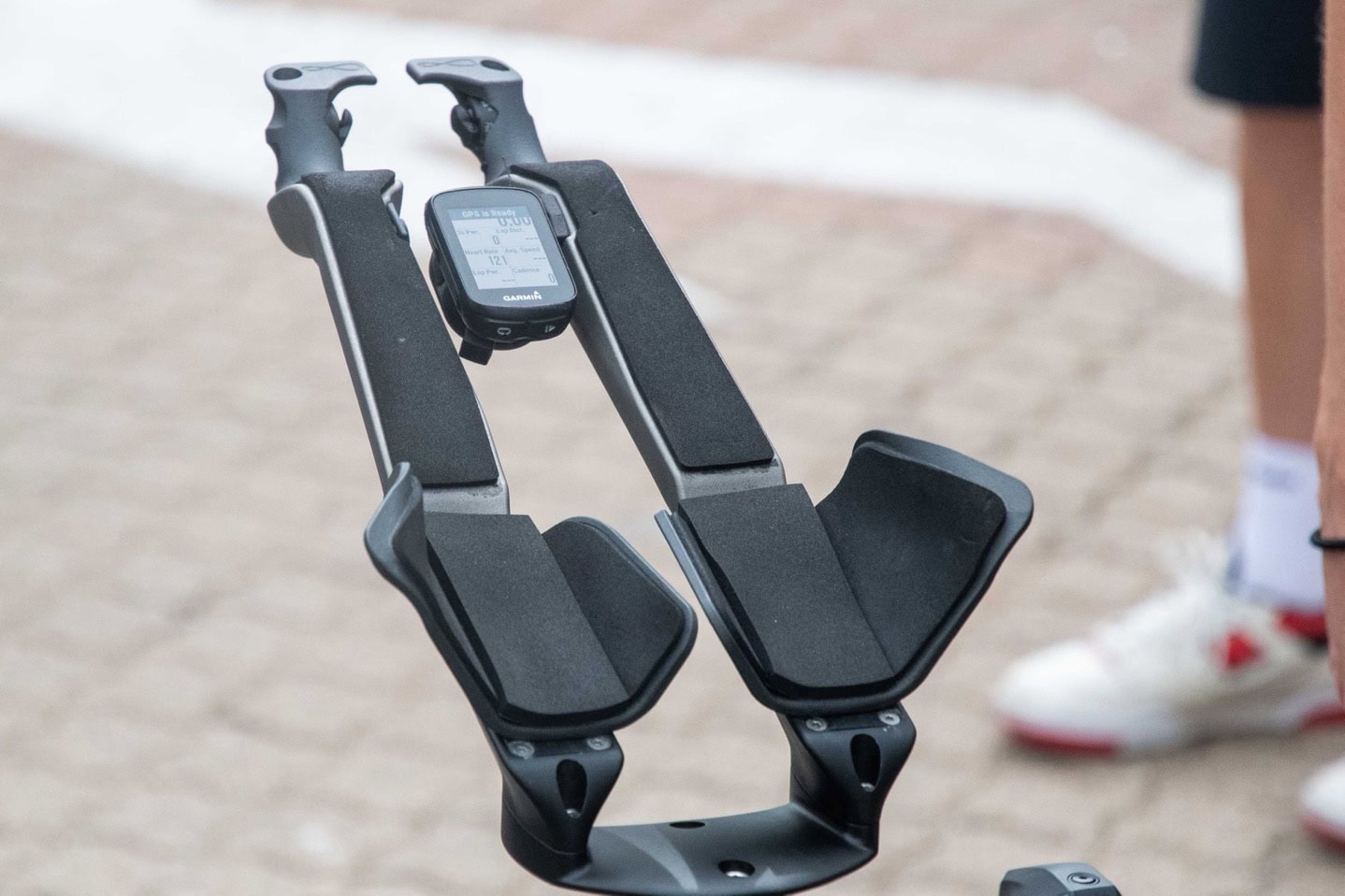
If you’re looking for marginal gains at the absolute pointy end of this TT, I suppose saving a few grams and possible aero hit, in this area makes sense. Of course, sometimes it’s just logically easier to fit mount-wise within the aerobar gap space.
Of course, the use of TT bikes means this isn’t a good stage to take a closer look at which bike computers teams are normally using. And likewise, which power meters companies are normally using. Most of the power meter pieces do line-up to their team Shimano/SRAM sponsorships, with an exception for one team on SRM (Team UAE). There are 15 teams on Shimano, 4 teams on SRAM, and 3 teams split on FSA or SRM.
But on normal road stages, you’ll also be able to sometimes sneak a look at which Shimano teams are putting power meter pedals on there to get more accurate data. Teams continue pressure Shimano in this area, and outside of visible races where people like me take photos of bikes, many Shimano-equipped teams and riders are using power meter pedals for more accurate training power data.

Now, while some things aren’t easily seen at TT stages – one item that’s not easily seen at regular stages is trainers. Thus, let’s dive into that. As always, all of these trainer partnerships are sponsored by their respective manufacture. Notably, we saw Elite announced the Elite Justo 2 and Elite Avanti trainers just two days prior at Eurobike 2024, and sure enough, a number of the Elite teams were using those during their warmups. Some Justo 2, some Avanti. Here, a Justo 2:
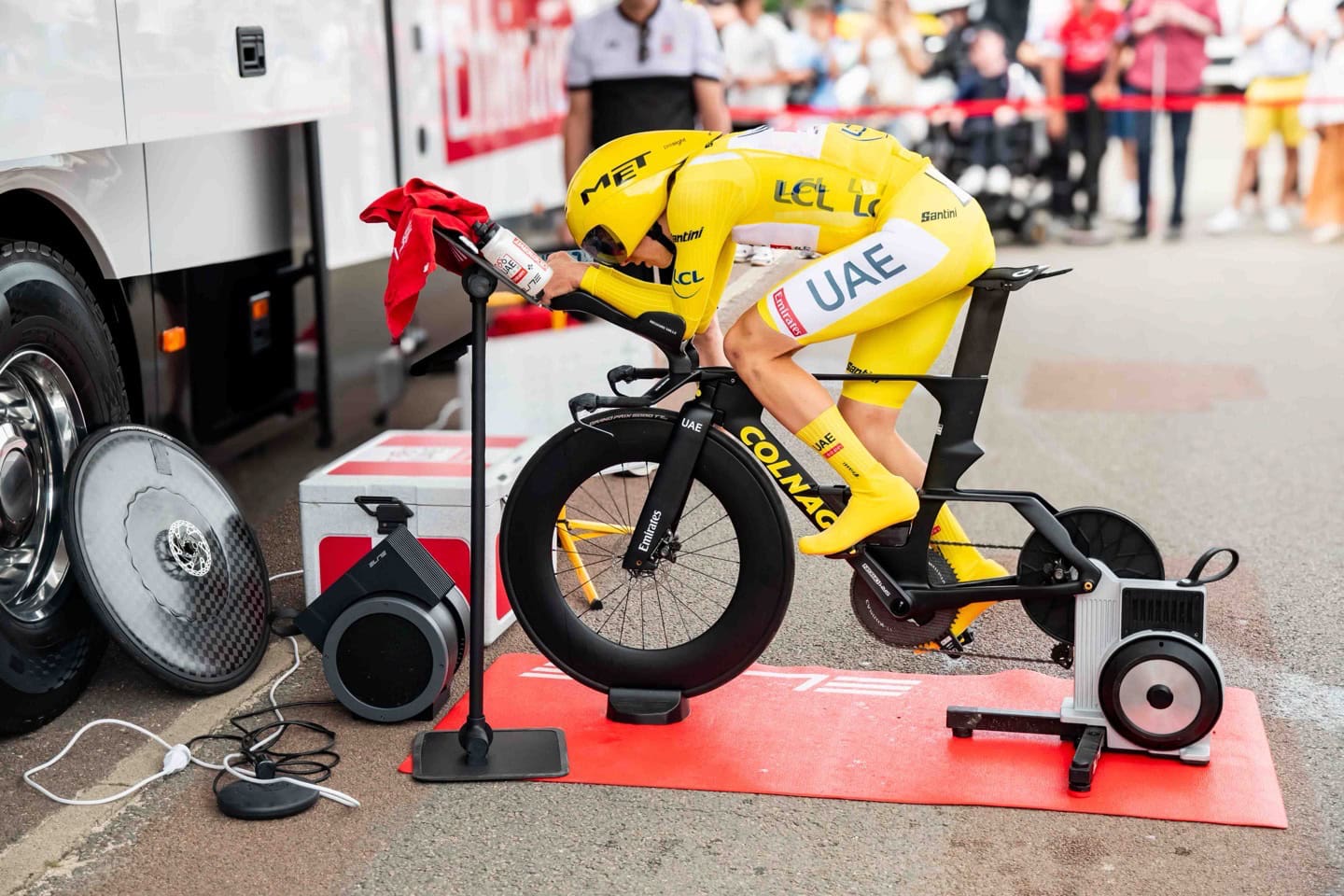
However, the most interesting Elite tidbit was probably the one unannounced item, the below trainer with Team Decathlon:

At first glance I saw the long-available Elite Direto XR, but then I noticed the “Team Edition” sticker. I figured that was just a random marketing thing since it was with the team, but after texting with Elite, turns out, that’s actually a legit new edition of the Elite Direto XR with new software features.
Specifically, this new Elite Direto XR Team Edition will feature: Race Mode (10Hz data transfer), Shimano Di2 Trainer Control, Pain Break, and Standalone Mode. It’ll be available exclusively at Decathlon later this summer. A clever partnership, and cool to see Elite add those features in.
Beyond that, we saw Tacx kit out some of their teams with the Tacx NEO 3M, but others were on the Tacx NEO 2T. As usual, Tacx had skinned their trainers (NEO 3M units) for teams currently holding title jersey’s, like the KOM/sprinter/etc jerseys.
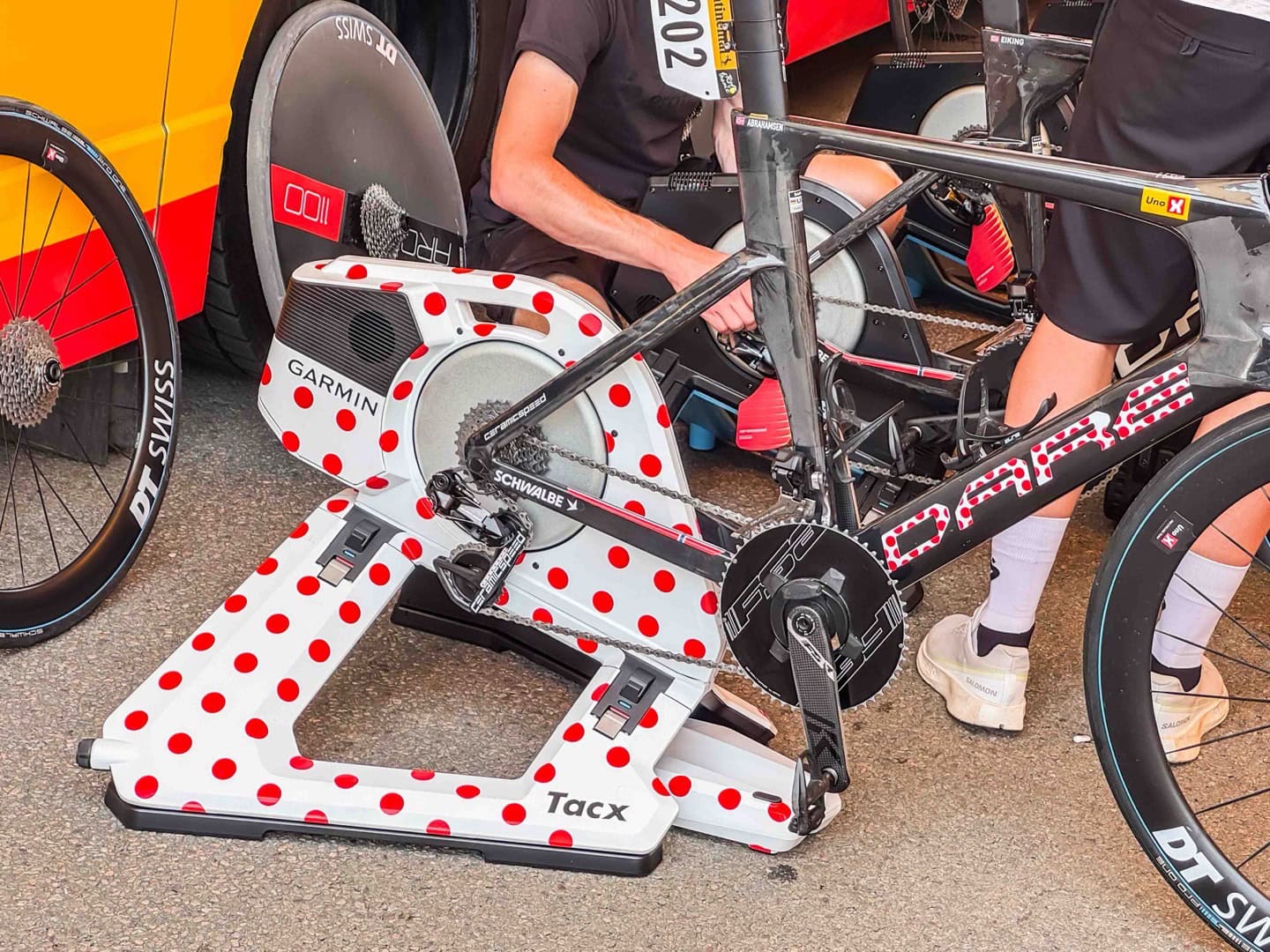
Interestingly, I found out via Instagram, that the skinning of these trainers isn’t done directly by Tacx, but rather a 3rd party company, Wrap My Bike.
We see similar skinning/stickers of trainers for teams by Wahoo as well, such as this one for Team EF:
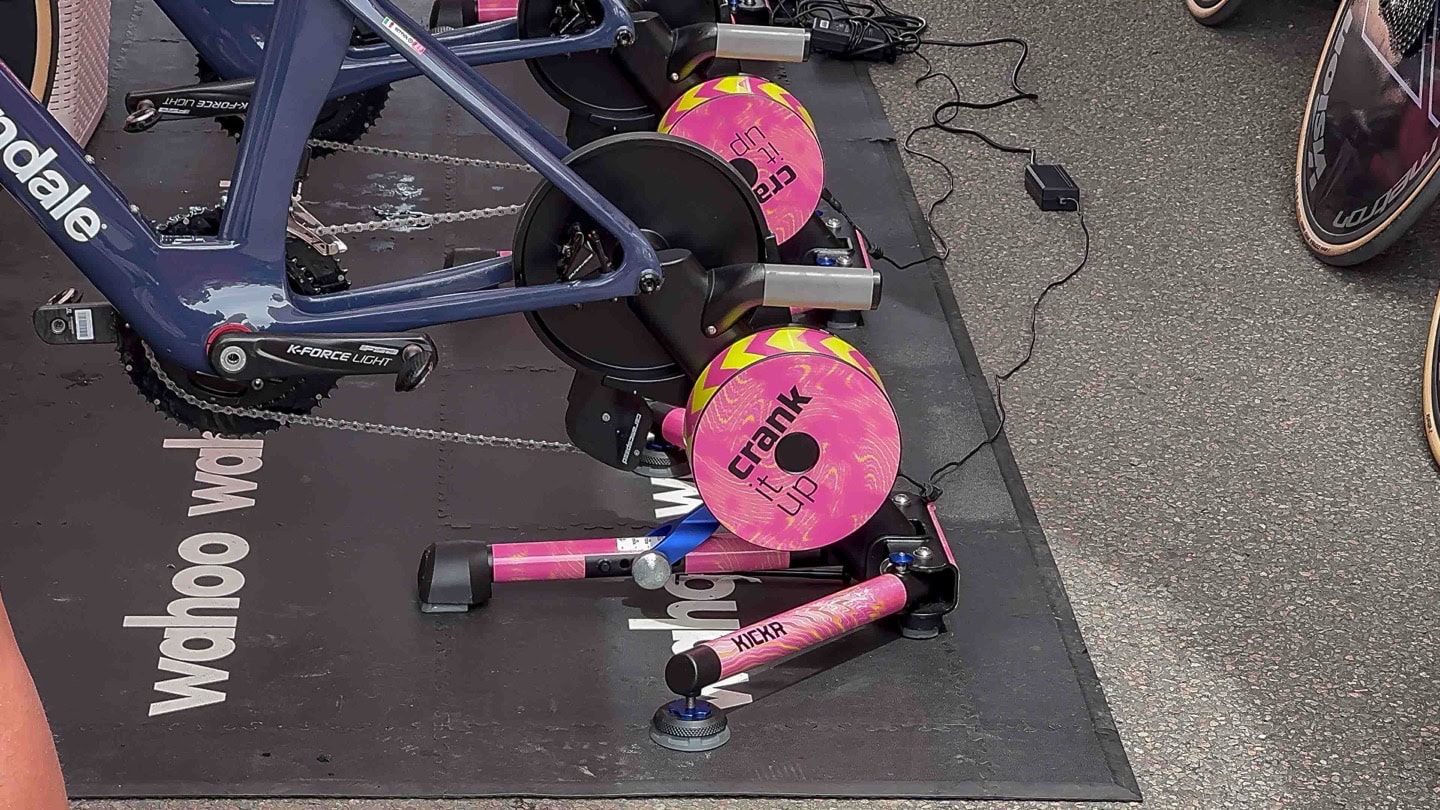
And further, we see skinning of bike computers too. You can see yellow jersey holder Tadej Pogačar, with his yellow-decal Wahoo BOLT V2:
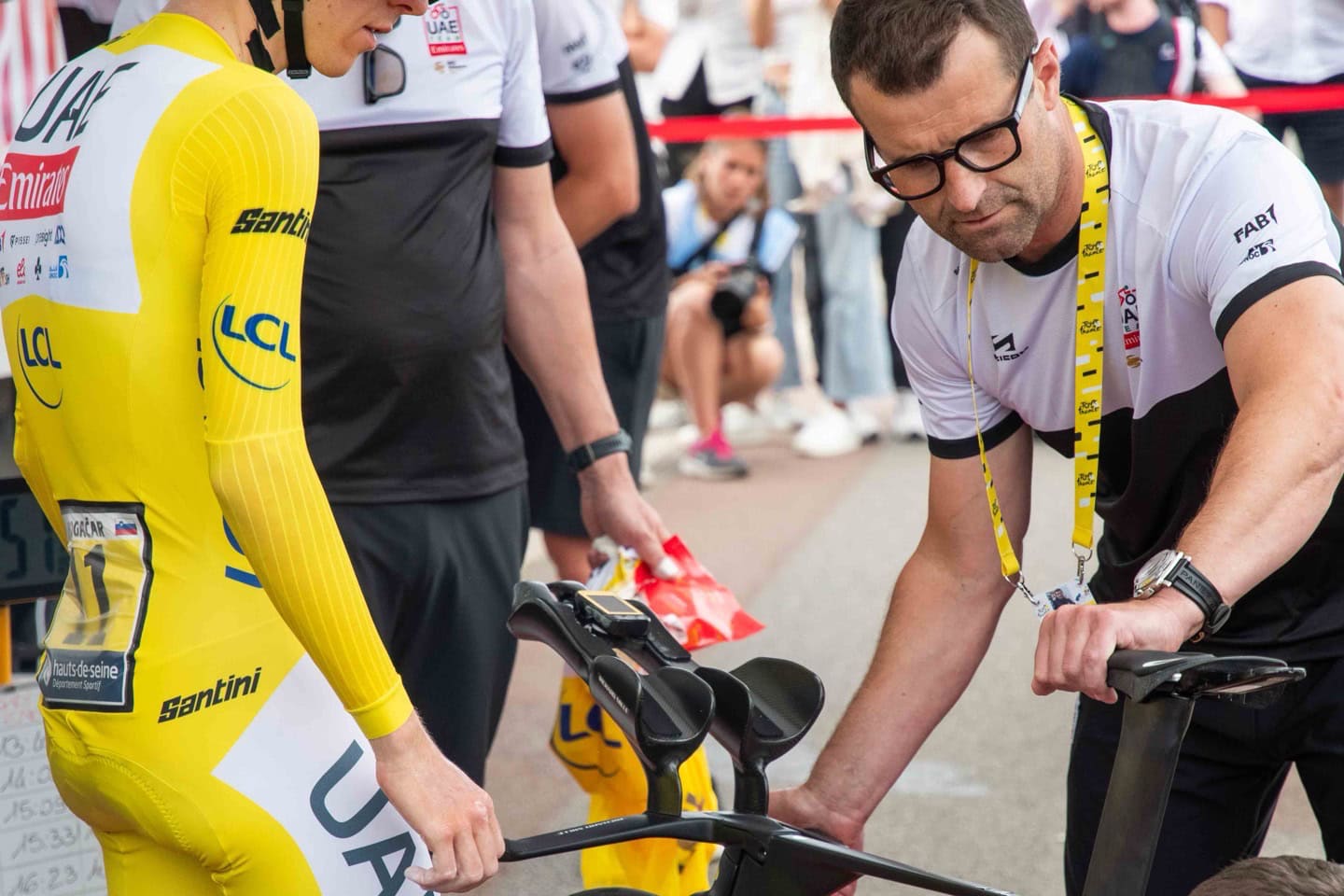
In any event, here’s the complete run-down of which teams were using which trainers. In cases where there may have been a mixture, I went with whatever trainer was most prevalent. In most cases though, when there was an odd-ball trainer, it was usually just one or two of a different model.
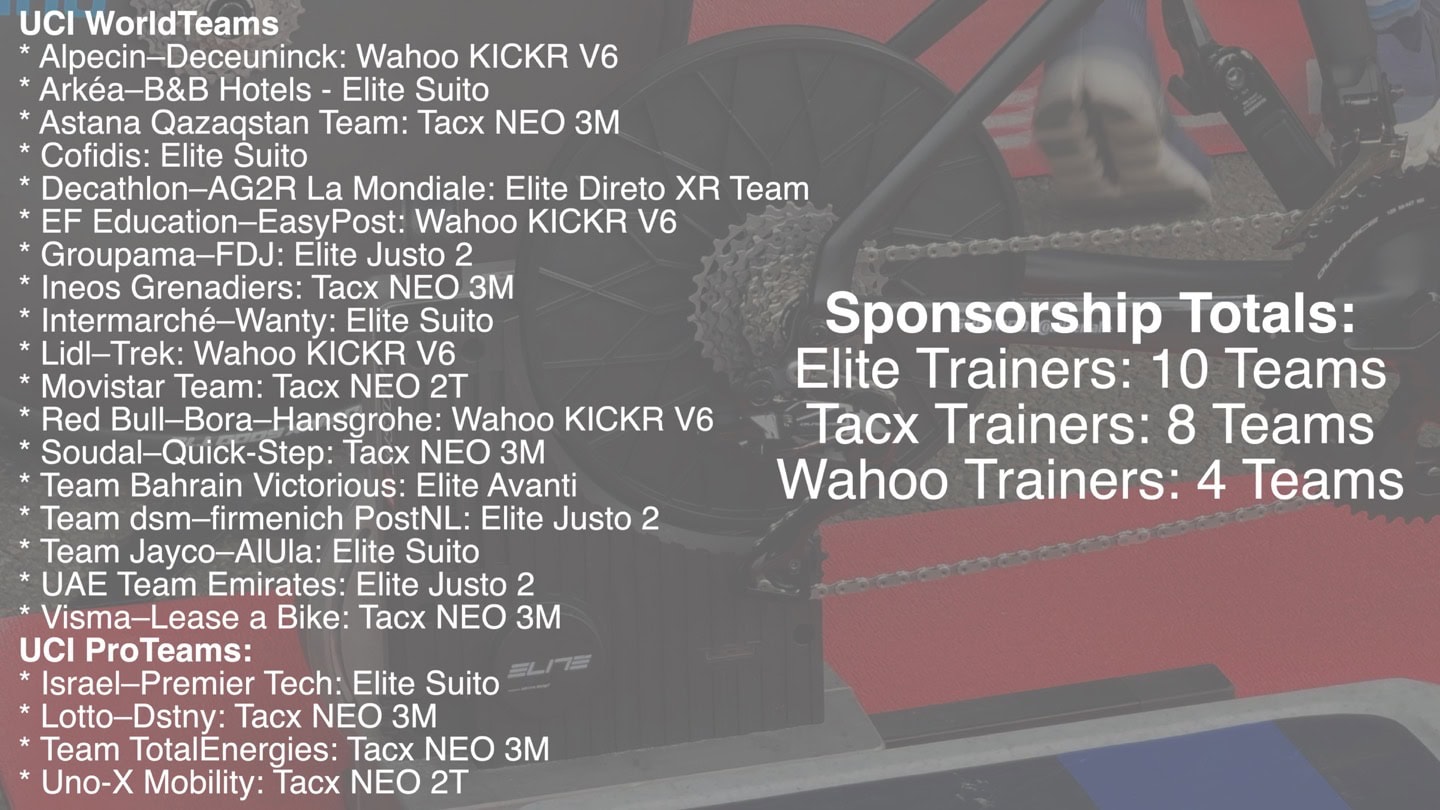
Oh, and lastly, near the starting gate for the TT, you’ll have found a collection of trainers for riders to ride on. It’s unclear to me if various teams were leaving these there for all riders, or how it was working. But there was basically a Noah’s Ark of trainers down there, at least one, if not two from each brand to ensure riders had options in case they wanted to continue their warm-up right down to the final seconds. These were usually done on secondary road bikes the team mechanics brought down:
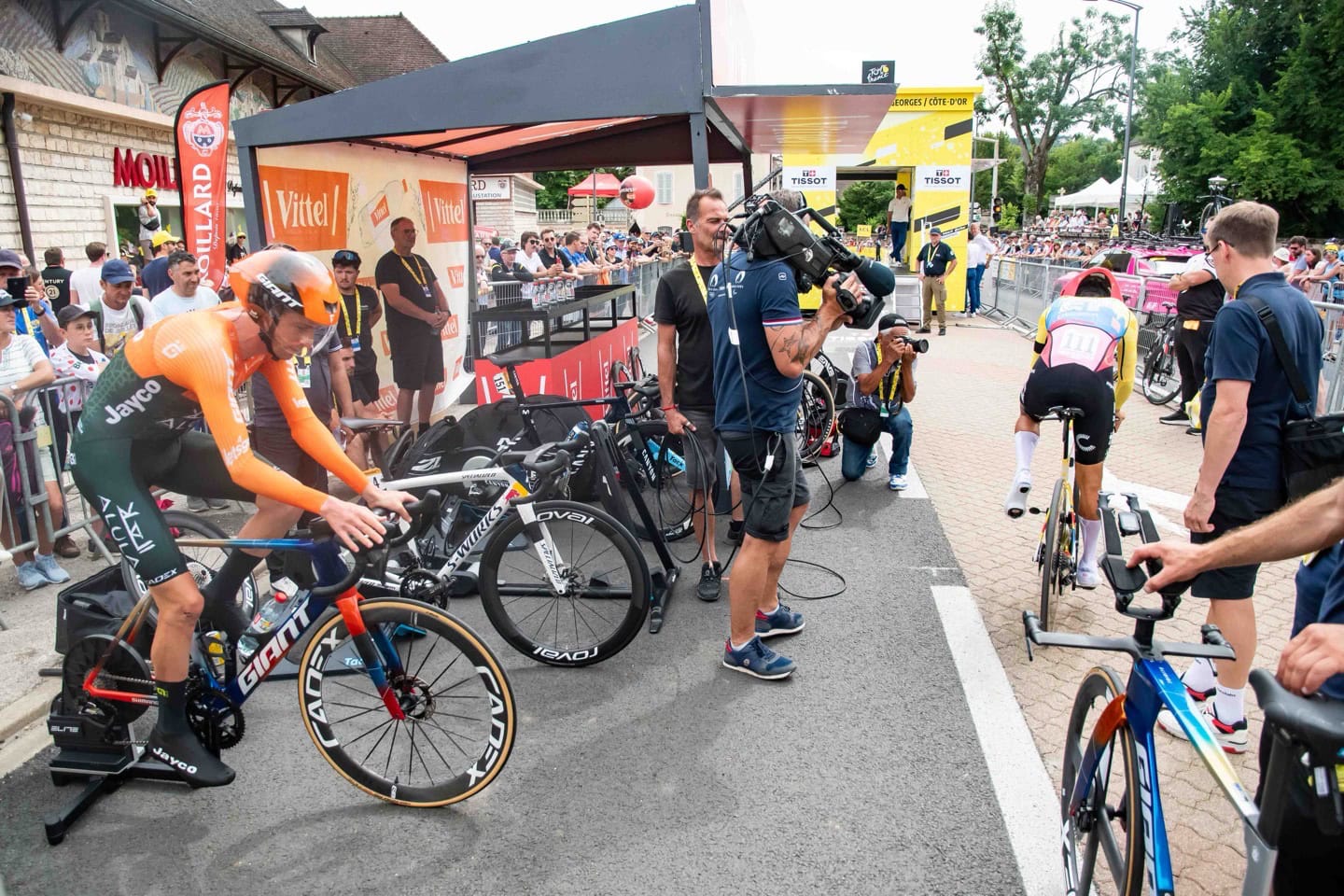
Though, there were two sets of Elite rollers floating around as well, in case a rider wanted to do so on his TT bike and not deal with the last second wheel swap.
With that – stay tuned for more sports tech in some future Tour de France stages, as well as the women’s side (since that handily starts in The Netherlands this year, where I live).
Thanks for reading!


0 Commentaires